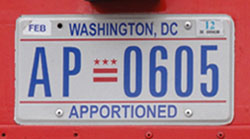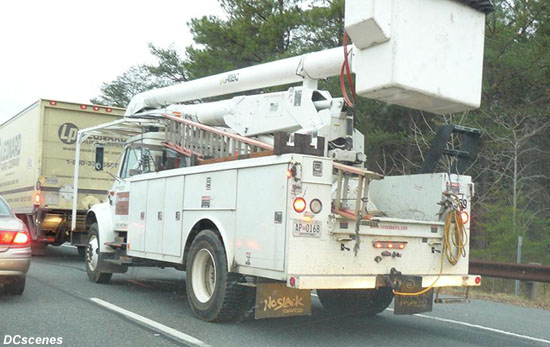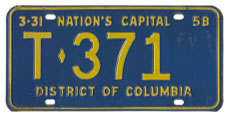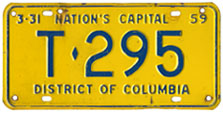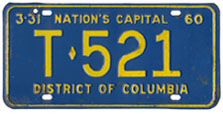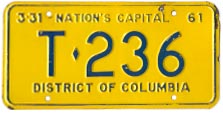Non-Passenger License Plates
Page V: Truck and Trailer Types
| Apportioned | Commercial (Truck) |
| Apportioned | First Issued: c.2000 |
Current Type Designation: AP prefix |
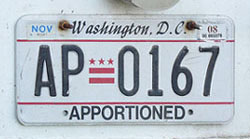 |
|
Due to its small size and number of commercial trucks based within its borders, it's not surprising that Washington, D.C. was the last American jurisdiction to introduce plates of this type. Apportioned plates are issued for use on commercial vehicles that travel across state lines. Registration fees are apportioned to jurisdictions in which the vehicle is operated based upon records of mileage traveled maintained by the owner. The first District of Columbia apportioned plates have embossed characters that are painted black, whereas by 2009 they were being issued in the flat style with blue figures. The first example observed with DISTRICT OF COLUMBIA instead of WASHINGTON, DC was no. AP-1001 (pictured below) seen in use at the end of March 2014 and validated through Aug. 2014. Plates of this type are validated with a sticker affixed to the plate, not to the windshield. |
|
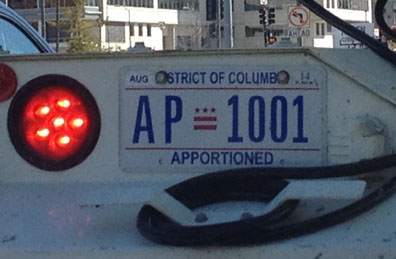
| Commercial (Truck) | First Issued: 1926 |
Current Type Designation: C prefix |
Click here to reach a separate page dedicated to this type.
| Solid Waste | First Issued: unknown |
Current Type Designation: SW prefix |
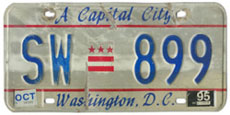 |
Plates of this type have been issued, at least since the mid-1990s, for use exclusively on privately-owned refuse collection trucks. Residential trash is collected by city employees in trucks registered with D.C. Government plates, and many private trash haulers (who collect refuse generated by businesses) are based in Maryland and Virginia (the vehicles of which must therefore carry a D.C. Solid Waste permit). The number of D.C.-based trucks that are registered with Solid Waste plates is quite small, so the plates are rather scarce. |
| Trailer | Earliest Known: 1932 |
Current Type Designation: T prefix |
 |
|
 |
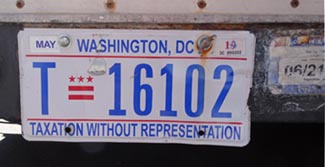 |
The first year of issue for this type is unknown. Because 1927-34 plates with only a T prefix were issued for use on private passenger cars, a TR prefix was used to identify trailer plates before 1935, when the type name TRAILER was first embossed. The current trailer numbering sequence began with registration number T-101 issued in April 1974 when all existing 1973 (exp. 3-31-74) plates were replaced with 1974 (BICENTENNIAL) multi-year baseplates. As of early 2011 numbers were around 18300 (that number having been observed on Feb. 28). By that time, trailer plates were being issued at an amazingly low rate. During fiscal year 2011, only 199 were issued (as shown here). So few post-1974 examples of this type are known that little is known about which registration numbers appeared on the various baseplates issued since 1974. The lowest and highest numbers known on the variety of the 1991 (Celebrate & Discover) base with the slogan at the top are 10065 and 15017, respectively, and the lowest number on the current flat style is 15672. It's likely that trailer plates were not made on every base variety utilized since 1974. |
|
 |
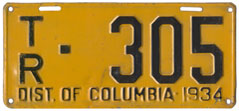 |
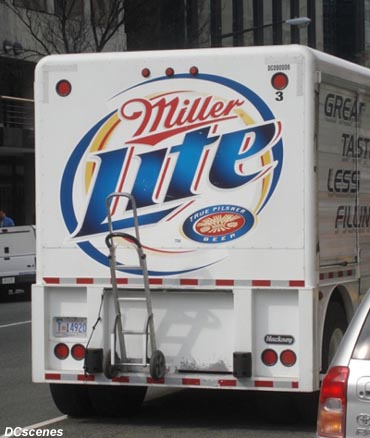 |
|
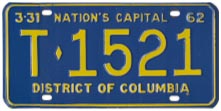 |
 |
|
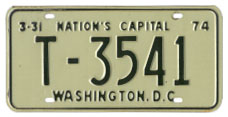 |
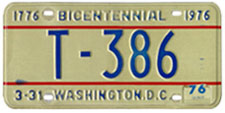 |
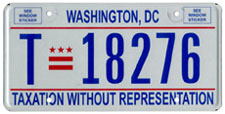 |
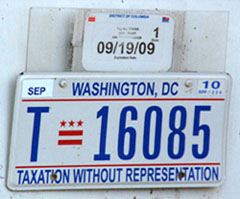 |
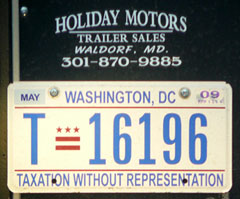 |
These trailer plates have been properly validated with stickers whereas the individual to whom number T-18276 (pictured above) was issued neglected to affix his stickers. Note that the city name is printed in a narrower font on no. 18276 than appears on the two earlier plates, nos. 16085 and 16196. Although we seldom know much about how plates pictured on the site were used, we do know that trailer plate no. 18276 was fastened to a utility trailer that its owner used to facilitate a cross-country move to San Francisco. Few D.C. trailer plates are likely ever used that far from the District. |
|
|
This page last updated on December 31, 2017 |
 |
|
copyright 2006-2018 Eastern Seaboard Press Information and images on this Web site may not be copied or reproduced in any manner without consent of the owner. For information, send an e-mail to admin@DCplates.net |














